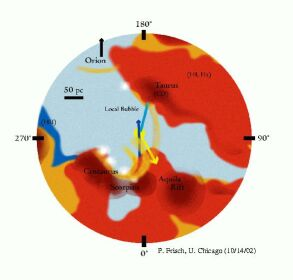Tau.Neutrino said:
Knee jerk reactions.
> Extraterrestrial Hunters Figure Out a Way to Expand Their Search for Signals by a Factor of 200
How is the Allen array going? Is it finished yet?
> Gravitational waves could show what’s happening inside a star as it’s going supernova
First catch your rabbit.
> New quantum paradox throws the foundations of observed reality into question
Let me guess, Bell’s inequality again?
> A new method for directed networks could help multiple levels of science
I put forward a proposal for helping multiple levels of Science to CSIRO. Rejected as it wasn’t sufficiently “applied”.
> Researchers capture the world’s first 3,200-megapixel digital photo
Baby steps.
> Paving the way for tunable graphene plasmonic THz amplifiers
Um. What?
> Quantum light squeezes the noise out of microscopy signals
Quantum light is the noise in microscopy signals.
> The weird space that lies outside our Solar System
Had a look at that some time back. The local bubble. Yes. It is weird.


> Biggest Bang Since ‘The Big Bang’ Creates A Black Hole Science Says Should Not Exist
Why not? I mean a small bang may create a black hole that should not exist. But why a big one?
> A New Cosmic Tension: The Universe Might Be Too Thin
Density of the universe. Has been studied since before the days of Edwin Hubble. Tensions are part and parcel of cosmologies these days – usually they’re the result of someone underestimating the size of the error bars. See also recent discovery of giant halos around galaxies – they aren’t thin.
> Mathematicians Report New Discovery About the Dodecahedron
New? As it happens, I made a new discovery about the dodecahedron about 30 years ago. But so what?
> Researchers develop molecule to store solar energy
A relative of chlorophyll?
> Strange, Misshapen Orbits of Planet-Forming Disks in a Triple-Star System
My guess is the standard warped disk. But if it’s a highly elliptical orbit then I’d be very interested.
> Research unravels what makes memories so detailed and enduring
I give up. What makes memories so detailed and enduring?